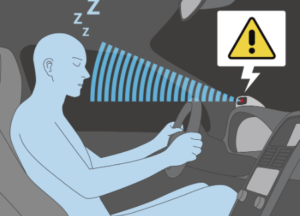Your navigation on the road in one of our top priorities in providing fleet management. As technology evolves, so does our fleet management! With the help of driver assistance systems, vehicles are now equipped with solutions that could guarantee a more safety travel and navigation of vehicles!
 Advanced Driver Assistance Systems (ADAS) has the goal of engendering an overall increase in car safety for every driver and passenger on the road. Since this system is complex and varied, people tend to stir away from wrapping their heads around ADAS but here’s a breakdown of the components of the system which could possibly save your life on the road.
Advanced Driver Assistance Systems (ADAS) has the goal of engendering an overall increase in car safety for every driver and passenger on the road. Since this system is complex and varied, people tend to stir away from wrapping their heads around ADAS but here’s a breakdown of the components of the system which could possibly save your life on the road.
Adaptive Cruise Control
With cruise control, a vehicle automatically slows down or speeds up in response to the actions of its environment on the road. This vehicle solution constantly monitors your cruise control for safety reasons which can be automatically shut off below a certain speed threshold or should the driver feel the need to do so.
Adaptive Light Control
Adaptive light control is made to secure the safety of drivers during the night because it’s a solution which helps the driver control the vehicle’s light and see better and further in the dark. This system allows the headlights to swivel and rotates to better illuminate roadways especially when there are corners and turns.
Automatic Braking
This is a pre-crash technology which reduces the severity of high-speed collisions in the event of a lapse of the driver’s attention. While some automatic braking systems actually prevent collisions, they are typically designed to slow the vehicle down to acquire less damage and prevent fatalities or major injuries.
Automatic Parking
Some of these vehicle solutions are designed to actually park a car automatically. However, some also provide advice on how the driver could parallel park.
Blind Spot Detection
This system uses a variety of sensors to provide the driver the information to sense if there is a presence of an object or vehicle within the blind spot. Some include alarms and cameras which that transmits an image to a monitor which will notify the driver of a possible collision.
Collision Avoidance Systems
If a vehicle is in danger and probability of a collision, this vehicle solution provides alarms to warn the driver if the vehicle will collide with other vehicles, pedestrians, or road obstructions. These systems are designed to use sensors that measure the proximity of vehicles from other objects. Some of these systems can perform preventive actions such as pre-charging brakes or applying tension on the seatbelts.
Driver Drowsiness Detection
This is one of the most useful vehicle solutions since most drivers suffer from drowsiness during long drives, especially at night. Some of these systems look for the driver’s head to not in a telltale motion which indicates sleepiness, and while others use technology to lane detection warnings.
GPS Navigation
GPS navigation systems effectively replace hassle, cumbersome paper maps. These devices can be installed in vehicles to provide visual and audio directions which save the driver the hassle and time to look in an actual map.
Night Vision
Night vision systems are designed to help drivers at night to see better if it’s almost impossible to make out at night. Some of the systems like active night vision use infrared lights, and others like passive systems rely on thermal energy that the vehicles, animals, and other object emits.
